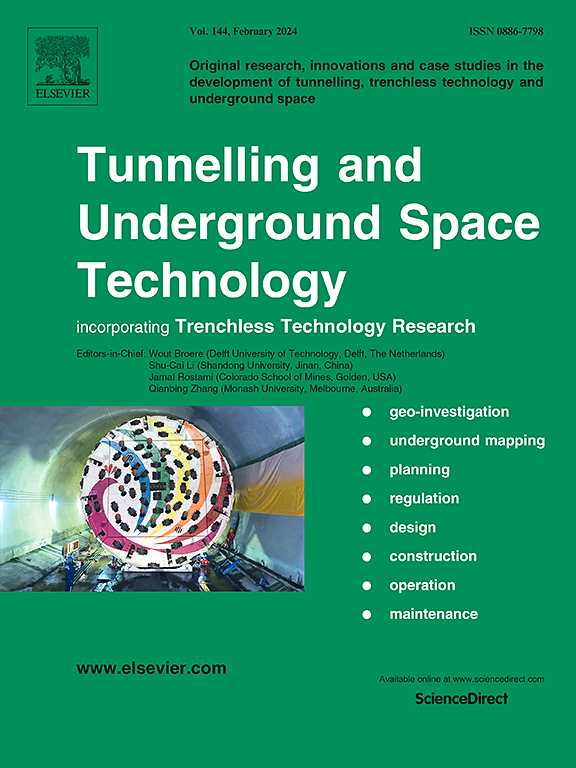Creep-slip behaviors of surrounding rocks in a water diversion tunnel considering strike-slip and dip-slip scenarios
IF 6.7
1区 工程技术
Q1 CONSTRUCTION & BUILDING TECHNOLOGY
引用次数: 0
Abstract
A 3D numerical model of distributed fault is established in this paper. Considering both strike-slip and dip-slip, the stress evolution and spatial–temporal migration characteristics of surrounding rock at different creep-slip times and depths are analyzed during creep-slip. The failure approach index (FAI) was employed to assess the failure degree. The results show that the shearing and squeezing behaviors of the surrounding rock are obvious during creep-slip. The stress direction rotates sharply in the hanging wall and influence zone. Several obvious stress concentration areas (bottom and right) and unloading areas (top and left) are formed in the hanging wall near the slip surface. From the FAI values, the shear failure generates near the slip surface and extends to the hanging wall, especially in the surrounding rock at the top and left. The failure has experienced a rapid growth stage (0–5 years), a slow growth stage (5–40 years), and an accelerated growth stage (40–100 years) during the creep-slip. The maximum FAI values in the surrounding rock at the top and left are 6.5 and 8.4, respectively, and little failure occurs in the surrounding rock at the bottom and right. More attention should be paid to the failure range and failure degree in the axial direction of the tunnel when the stress ratios are of 0.5:1 and 2:1. The dip angle and dip direction only affect the failure mode and failure degree in the tunnel section. These should all be considered when designing the protection measures. The peak position of displacement gradient is inconsistent with the peak position of maximum principal stress and peak position of FAI, which may be affected by the model parameters. This study may provide a basis for the prevention and control of fault slip in tunnels crossing faults under similar geological conditions.
求助全文
约1分钟内获得全文
求助全文
来源期刊

Tunnelling and Underground Space Technology
工程技术-工程:土木
CiteScore
11.90
自引率
18.80%
发文量
454
审稿时长
10.8 months
期刊介绍:
Tunnelling and Underground Space Technology is an international journal which publishes authoritative articles encompassing the development of innovative uses of underground space and the results of high quality research into improved, more cost-effective techniques for the planning, geo-investigation, design, construction, operation and maintenance of underground and earth-sheltered structures. The journal provides an effective vehicle for the improved worldwide exchange of information on developments in underground technology - and the experience gained from its use - and is strongly committed to publishing papers on the interdisciplinary aspects of creating, planning, and regulating underground space.
 求助内容:
求助内容: 应助结果提醒方式:
应助结果提醒方式:


